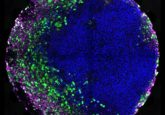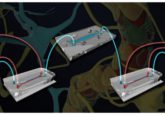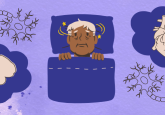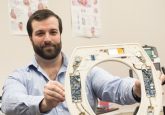Monitoring estradiol levels in sweat

Estradiol is the most potent form of estrogen. Now, researchers have developed a way to monitor estradiol levels by detecting it in sweat.
Estradiol plays a major role in female health and fertility; high levels of the hormone are associated with breast and ovarian cancer, while low levels are associated with osteoporosis and heart disease. Estradiol is also a key hormone necessary for the development of secondary sexual characteristics in women. For these reasons, physicians often monitor estradiol levels. However, this requires a blood or urine sample, which often means a visit to a clinic. To streamline the estradiol-monitoring process, a team at Caltech (CA, USA) has developed a wearable sensor that measures estradiol in sweat, which could one day mean easier estradiol monitoring at home and in real-time.
The sensor itself was engineered in much the same way as other sensors developed by this group to monitor cortisol and COVID-19. It is composed of a flexible plastic membrane, microfluidic passages for channeling sweat into the sensor, gold nanoparticles and titanium carbide films that give the sensor a large surface area and electrical conductivity.
The main issue with trying to detect estradiol in sweat is that it is present in very low concentrations. To circumnavigate this, the team added aptamers, short single-stranded DNA that work as artificial antibodies designed to bind a specific target molecule, to the sensor’s gold nanoparticle surface. When these aptamers bind an estradiol molecule, the aptamer releases a redox molecule that is recaptured by a nearby electrode. This then produces an electrical signal correlating with the estradiol level, which is transmitted to an app on your smartphone.
 Keeping a finger on the pulse of antipsychotic drug detection
Keeping a finger on the pulse of antipsychotic drug detection
Researchers at the University of Surrey have developed a test for monitoring antipsychotic drugs utilizing sweat collected from individuals’ fingertips.
The microfluidic only allows a certain amount of sweat into the sensor for analysis thanks to an automatic valve. This ensures that individuals can get an accurate reading of their estradiol levels without additional sweat disturbing the process. The sensor also collects pH, salt levels and skin temperature to provide a more complete picture of analysis conditions.
The team is hopeful that this sensor will be particularly useful for individuals trying to conceive – either through IVF or naturally – the success of which depends on the timing of ovulation. For some, ovulation does not occur at regular intervals, requiring the need for estradiol monitoring. Additionally, for those undergoing hormone replacement therapy, this sensor could help ensure they are taking the correct dosage.
Laboratory testing of the sensor has shown reliable and accurate monitoring of estradiol levels over the course of the reproductive cycle. Senior author Wei Gao plans to adapt this sensor to monitor other hormones and miniaturize it to be worn easily and inconspicuously.





